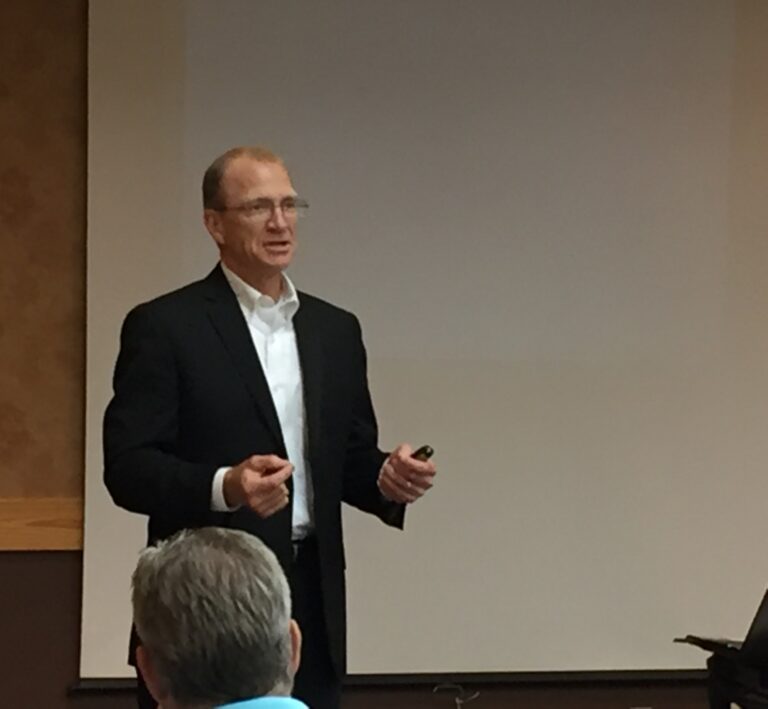Two of the greatest quotes from one of the greatest leaders
When you think of great quotes from great leaders, you might think of FDR, JFK, MLK, or maybe Gandhi and Churchill. I’m sure they said some good things. But what do they know about selling to farmers, livestock producers and agribusinesses? Exactly; not much. That’s why I like to reflect back on some of the great leaders and salespeople I had the privilege to be around.
This particular quote resonated, stuck with me and has served me for over 20 years. It shows the power of what you might say as a leader and what you might take away from your next sales meeting
The 35 or so salespeople were meeting for the first time as part of a newly merged business unit. This merger & acquisition brought three different business units together. The newly appointed general manager was giving his introduction speech on the first day of a three day-monthly sales meeting. Yes, there was a time when we had monthly sales meetings. The teams were a motley crew: some old school, some cutting edge techie types and a completely separate division that wasn’t related to the group at all.
One of the main reasons for the merger was of course performance. Sales had stagnated for the old school team. Gross margins had slipped for the techy group. In general, the three separate teams had fallen into a pattern of relying on current customers to provide their results. The struggle was that the current customer base was dwindling or the margins were dwindling, and in some cases, both were dwindling. The sled of profitability was pointed down hill and picking up speed.
That’s where we were that September morning as we gathered to hear the new manager give us his “Rah Rah” speech. My thought at the time was, “Let’s get this over with fast, so I can get back out and sell something”. Isn’t that what all of us in sales think when sitting in a meeting?
Little did I know that his opening speech would bring a one liner to me that has helped me many times over the years. For the new manager of this motley crew, this wasn’t his first leadership challenge. He had been through some of the toughest business units in the company and turned them around. The primary tool in all of those turnarounds was Prospecting.
In agribusiness sales, we get busy, very busy. We serve our customers well. During peak seasons, it’s all we can do to keep our current customers in product, which leaves little time to prospect. The challenge is that we fail to pick back up after the busy season and start prospecting for new customers. That would be fine if customers never quit, retired, switched to competitors, or died. However, they do all of those things. Without a solid prospecting program, our territory slowly spirals downward.
After a short explanation of the most recent P&L (profit & loss statement), the new manager began his one step process for getting us back on a profitable track: Prospecting.
He ended his presentation with this one line. “When in doubt about what to do, go out and prospect!”
As a new salesperson, I had a lot of doubt about my selling skills, about where to go in my large territory, who to call on, and how to plan my time. This quote would often pop back into my mind as I tried to figure out how to spend my time. As Ag sales professionals who office out of our homes, it can be a challenging task to figure out where to go each and every day. When we fail to plan it out, we default by going to current customers. In particular, we go to those closest to us or that we like the most.
So, today as you start planning where you are going tomorrow, next week or next month, remember, “When in doubt, Prospect!”
As Paul Harvey used to say, “And now, the rest of the story”
In little less than a year after this meeting, we went from being a moderately profitable business unit to being in the top running for business of the year. More importantly, we grew our sales and our margins. The impact of this growth was that it allowed for more financial resources in our business. This included new facilities, upgraded equipment, hiring more people, and purchasing some other companies.
These successes required more than just new customers. It took sound financial management, actively collecting on our account’s receivables, and changing some business practices. However, the one thing that was needed was a steady cash flow to finance it all. Prospecting and selling new accounts were the fuel for the engine of growth.
Join me next week as we discuss the second great lesson, I learned from one of the great leaders in agribusiness.


